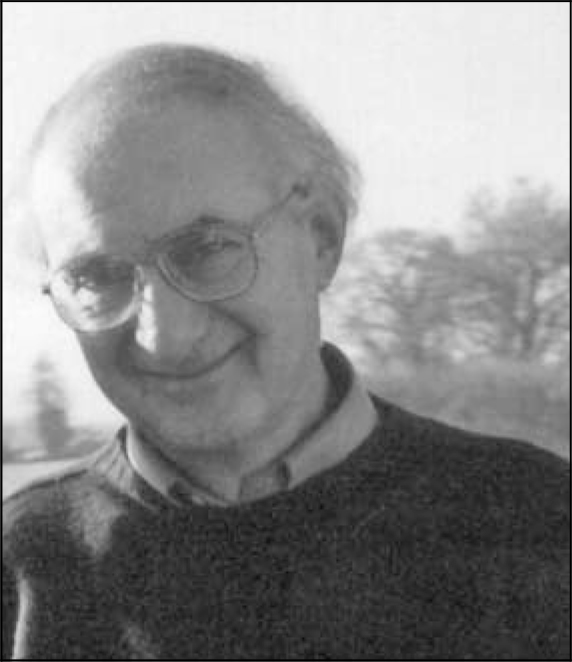Formerly Consultant Psychiatrist, Ticehurst House Hospital
Derek Steinberg was born in 1940 in Guildford and grew up in East Ham, where his Jewish parents had a shop. His sister Maxine remembers him as an imaginative, kind and patient big brother, who introduced her to museums and art galleries as a child and was a source of advice and wisdom as an adult. It was as a schoolboy that his breadth of interests emerged and his talent as an artist first became apparent. His interest in people and everything about them drew him to medicine, and he trained first at the London Hospital, graduating MBBS (London) in 1965, and then his fascination with the human mind led him to specialise in psychiatry at the Maudsley and Bethlem Royal Hospitals. He gained the DPM (London) in 1968. Further training and work came at the National Hospitals for Neurology and Neurosurgery, and his interest and skill in working with children and adolescents was forged at the Park Hospital for Children in Oxford. Derek passed the MRCPsych in 1972 and was elected FRCPsych in 1979. He was appointed consultant and clinical tutor at Long Grove Hospital and returned to the Maudsley and Bethlem Royal Hospitals in 1975, where he did his major clinical work as consultant to the adolescent unit there until 1994. This unit specialised in the assessment and treatment of young people with severe mental health problems. From 1994 to 1997 he was consultant psychiatrist and clinical tutor at Ticehurst House Hospital in Sussex (now Tricehurst Priory) where he organised a new unit for young people.

Throughout his life he was actively interested in a wide variety of subjects, leaving a collection of approximately 8000 books on topics including topography, philosophy, art and literature. He often carried a sketch book and was a regular contributor of cartoons to World Medicine. From 1997 he devoted himself to writing and consulting, drawing and sculpting in and around the home he and his wife Gill created in Lyme Regis. That garden and house are a tribute to their remarkable artistic and literary gifts.
Derek's time at the Bethlem Hospital was marked by his ability to nurture the work and expertise of others, both staff and patients. Attracted to the mental health consultancy work of the Tavistock Institute and its community mental health training programme, he learnt to cherish the contribution of everyone involved in the care and treatment of children, not least the children themselves. He recognised how important art, music, drama and education are to our mental health, and the massive contribution which professionals in those fields can bring to the more illness-orientated professions of medicine and nursing. He built up multidisciplinary teams which put into practice these ideas and drew in more and more people to contribute to the expertise and success of that unit. Such wide-ranging reflective practice enabled him to write so helpfully and teach so effectively many generations of mental health workers. He will be remembered by many as a kind, witty, diplomatic and modest man, who helped his colleagues steeped in the minutiae of modern psychiatry to see the bigger picture and to learn to recognise the systemic, political and philosophical factors that affect our health so much. He taught internationally in Holland, Japan, Singapore, Hong Kong and Trinidad and Tobago.
He was the author of several books and papers on psychiatry and related topics. He completed his last book Consciousness Reconnected while he was undergoing chemotherapy and radiotherapy after a diagnosis of oesophageal cancer. It was an enormous satisfaction to him to hold the finished volume (with a cover illustration by his daughter Anna) when it was published in September 2006. In many ways this book reveals the fruits of his lifetime's pursuit of knowledge and understanding about humanity. In the foreword Professor Peter Tyrer sums up his achievement in these words. ‘Wow. Here we have an author who is both a polymath and a scholar, who has the courage to incorporate psychology, neurophysiology, evolutionary theory and religion into one volume and can give good and proper justification for it.’ He knew and believed that science and art were but complementary reflections of the same humanity, and wished more than anything that the ‘high priests’ of every discipline would practise greater humility towards one another and show more curiosity for each other's wisdom and experience. In his last years he practised what he preached, reading widely and voraciously and studying the Jurassic Coast, drawing and painting the West Country as he saw it and finding the wonder of shapes in the Portland stone he sculpted. He died on 29 October 2006. Typically, his funeral was conducted by two friends, both Anglican priests, in the parish church at Lyme Regis. As an agnostic Jew he would have been delighted in the unique mixture of secular, Christian and Jewish ritual which marked his death and celebrated his life.
He is survived by his wife Gill and their two daughters, Kate and Anna.



eLetters
No eLetters have been published for this article.